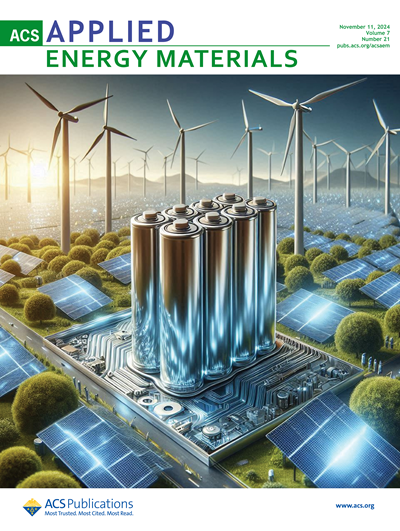飓风 "艾尔玛 "对美国佛罗里达州卢基礁珊瑚礁沉积物重新分布的影响
IF 5.5
3区 材料科学
Q2 CHEMISTRY, PHYSICAL
引用次数: 0
摘要
摘要了解珊瑚礁环境中事件驱动的沉积物迁移对于评估对珊瑚礁物种、栖息地、恢复和缓解的影响至关重要,但由于定量研究有限,全球知识缺口依然存在。2017 年 9 月 10 日,飓风 "艾尔玛 "登陆佛罗里达礁岛群(Lower Florida Keys),持续风速达 209 公里/小时,浪高超过 8 米,直接影响了佛罗里达礁区(FRT),为全面、定量评估飓风对珊瑚礁结构和沉积物再分布的影响提供了一个独特的机会。我们利用激光雷达和多波束得出的数字高程模型(DEMs),在飓风艾玛肆虐前后对包括卢伊礁在内的佛罗里达礁盘带下部 15.98 平方公里区域进行了采集,以量化风暴影响造成的海底高程、体积和结构变化。在该研究区域内的 10 种生境类型的 400 多万个点位上,利用收集到的数据计算了两个时间段内的海拔高度变化:(1)"艾玛 "飓风肆虐前约 1 年和飓风肆虐后 3 至 6 个月,以及(2)飓风肆虐后 3 至 6 个月和飓风肆虐后 16.5 个月。高程变化数据随后被用于在 ArcMap 中生成三角不规则网络 (TIN) 模型,以计算每个时间段内海底体积的变化。我们的研究结果表明,飓风艾玛主要是一次沉积事件,使该研究地点的平均海底高度和体积分别增加了 0.34 米和 540 万立方米。沉积物主要向西南偏西(WSW)和下坡方向迁移,改变了海底地貌特征,包括沙浪和碎石场的迁移、浅海海草栖息地冲刷痕迹的形成以及海草和珊瑚为主的栖息地的掩埋。飓风 "艾尔玛 "过后约 16.5 个月(2017 年至 2019 年的 13 个月内),所有栖息地都出现了净侵蚀现象,平均海拔高度变化为-0.15 米,净体积变化高达-246 万立方米。风暴后这一时期的海拔变化率比同一地点的十年和多年变化率高出 1 到 2 个数量级,而且随着海底沉积物分布开始重新平衡到非风暴海况,变化显示风暴期间沉积的沉积物被侵蚀了约 50%。我们的研究结果表明,在季节和年度时间段内收集更高分辨率的海拔高度变化数据,可以提高对短期和长期海底变化速率和过程的描述和理解。本文章由计算机程序翻译,如有差异,请以英文原文为准。
Impact of Hurricane Irma on coral reef sediment redistribution at Looe Key Reef, Florida, USA
Abstract. Understanding event-driven sediment transport in coral reef environments is essential to assessing impacts on reef species, habitats, restoration, and mitigation, yet a global knowledge gap remains due to limited quantitative studies. Hurricane Irma made landfall in the Lower Florida Keys with sustained 209 km h−1 winds and waves greater than 8 m on 10 September 2017, directly impacting the Florida Reef Tract (FRT) and providing an opportunity to perform a unique comprehensive, quantitative assessment of its impact on coral reef structure and sediment redistribution. We used lidar and multibeam derived digital elevation models (DEMs) collected before and after the passing of Hurricane Irma over a 15.98 km2 area along the lower FRT including Looe Key Reef to quantify changes in seafloor elevation, volume, and structure due to storm impacts. Elevation change was calculated at over 4 million point locations across 10 habitat types within this study area for two time periods using data collected (1) approximately 1 year before the passing of Irma and 3 to 6 months following the storm's impact as well as (2) 3 to 6 months after and up to 16.5 months after the storm. Elevation change data were then used to generate triangulated irregular network (TIN) models in ArcMap to calculate changes in seafloor volume during each time period. Our results indicate that Hurricane Irma was primarily a depositional event that increased mean seafloor elevation and volume at this study site by 0.34 m and up to 5.4 Mm3, respectively. Sediment was transported primarily west-southwest (WSW) and downslope, modifying geomorphic seafloor features including the migration of sand waves and rubble fields, formation of scour marks in shallow seagrass habitats, and burial of seagrass and coral-dominated habitats. Approximately 16.5 months after Hurricane Irma (during a 13-month period between 2017 and 2019), net erosion was observed across all habitats with mean elevation change of −0.15 m and net volume change up to −2.46 Mm3. Rates of elevation change during this post-storm period were 1 to 2 orders of magnitude greater than decadal and multi-decadal rates of change in the same location, and changes showed erosion of approximately 50 % of sediment deposited during the storm event as seafloor sediment distribution began to re-equilibrate to non-storm sea-state conditions. Our results suggest that higher-resolution elevation change data collected over seasonal and annual time periods could enhance characterization and understanding of short-term and long-term rates and processes of seafloor change.
求助全文
通过发布文献求助,成功后即可免费获取论文全文。
去求助
来源期刊

ACS Applied Energy Materials
Materials Science-Materials Chemistry
CiteScore
10.30
自引率
6.20%
发文量
1368
期刊介绍:
ACS Applied Energy Materials is an interdisciplinary journal publishing original research covering all aspects of materials, engineering, chemistry, physics and biology relevant to energy conversion and storage. The journal is devoted to reports of new and original experimental and theoretical research of an applied nature that integrate knowledge in the areas of materials, engineering, physics, bioscience, and chemistry into important energy applications.
 求助内容:
求助内容: 应助结果提醒方式:
应助结果提醒方式:


